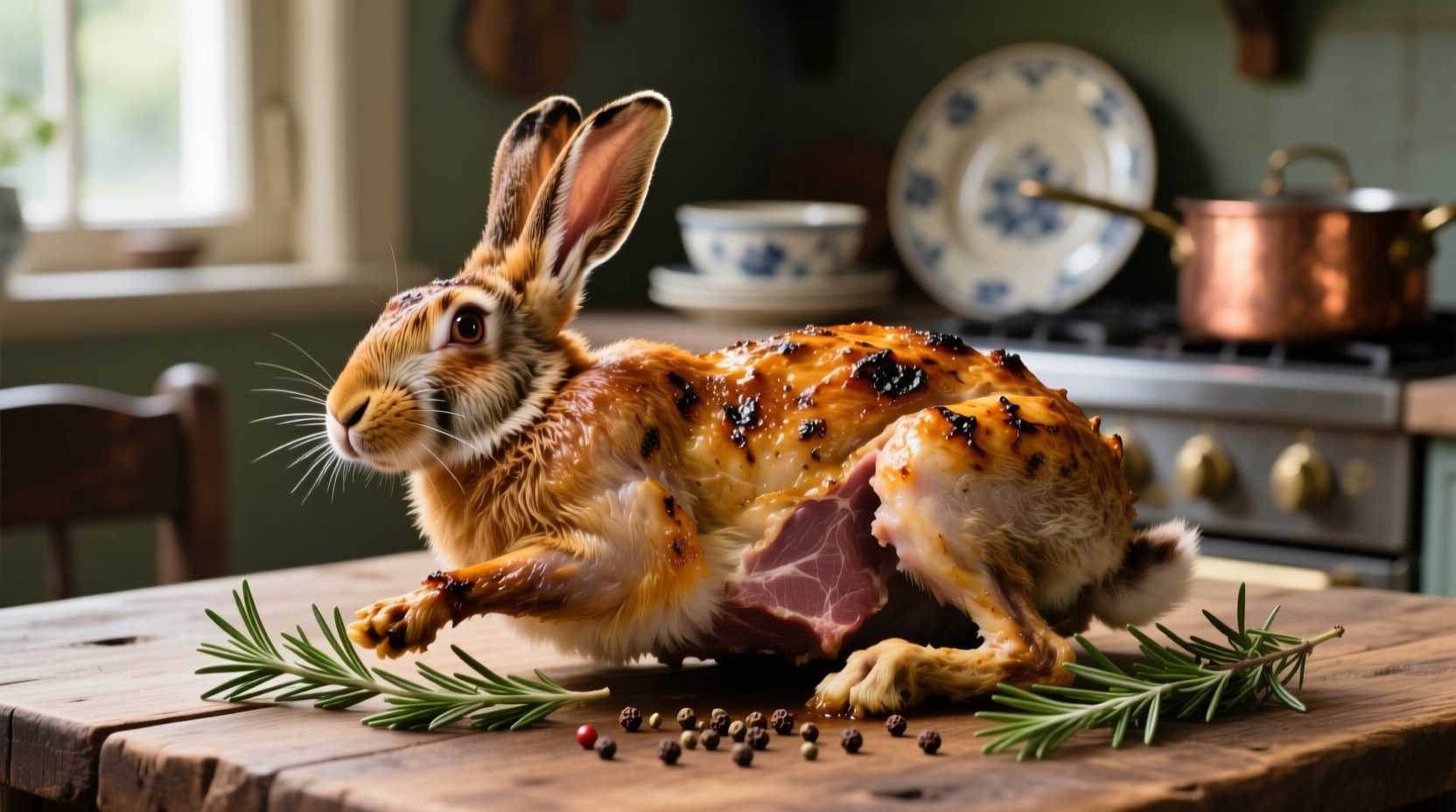Curious about rabbit as a protein source? This guide delivers exactly what you need to know about rabbit meat's flavor profile, preparation techniques, and how it compares to familiar meats. Whether you're a hunter, sustainable food enthusiast, or culinary adventurer, you'll discover practical insights for incorporating rabbit into your cooking repertoire.
Understanding Rabbit's Basic Flavor Profile
Rabbit meat occupies a unique space in the culinary world. Unlike strongly gamey meats such as venison or wild boar, rabbit offers a balanced flavor that appeals to those new to alternative proteins. The meat's mildness stems from its lean composition—rabbit contains less fat than chicken, resulting in a cleaner taste that readily absorbs surrounding flavors.
According to the USDA's National Nutrient Database, rabbit meat contains only 3.3 grams of fat per 3.5-ounce serving compared to chicken's 7.4 grams. This lower fat content directly influences its delicate flavor profile, making it less rich than poultry while maintaining a satisfying meatiness.
| Meat Type | Flavor Intensity | Fat Content (per 3.5oz) | Texture Characteristics |
|---|---|---|---|
| Farm-raised rabbit | Mild, slightly sweet | 3.3g | Lean, tender when cooked properly |
| Wild rabbit | Moderate gamey notes | 2.1g | Firmer texture, requires careful preparation |
| Chicken breast | Neutral | 7.4g | Moist, familiar texture |
| Pork tenderloin | Mildly sweet | 6.8g | Rich, juicy texture |
How Rabbit Compares to Common Meats
When exploring what does rabbit taste like compared to chicken, the differences become apparent. Rabbit has a more complex flavor profile—subtly sweet with earthy undertones—while maintaining a similar texture to chicken when cooked correctly. The comparison to chicken makes rabbit an excellent entry point for those exploring game meats.
Unlike lamb or duck, rabbit lacks strong distinctive flavors that can overwhelm accompanying ingredients. This versatility makes rabbit ideal for absorbing herbs, wines, and other flavor enhancers. Professional chefs often describe rabbit as "the perfect canvas" for creative cooking techniques.
Factors Influencing Rabbit's Taste Experience
Several elements affect what farm-raised rabbit tastes like versus wild varieties:
- Diet: Grass-fed rabbits develop more pronounced earthy notes, while grain-fed varieties taste milder
- Age: Younger rabbits (under 5 months) offer the most tender meat with delicate flavor
- Breeding: Domesticated breeds like New Zealand White produce consistently mild-flavored meat
- Preparation: Proper aging (1-3 days) enhances tenderness and flavor development
Wild rabbit's stronger gamey flavor comes from natural foraging and higher activity levels. Hunters often recommend soaking wild rabbit in buttermilk or milk for 12-24 hours to mellow the flavor—this technique effectively addresses the common question of how to cook rabbit to reduce gamey flavor.
Global Culinary Traditions Featuring Rabbit
Rabbit has sustained human populations for centuries across diverse cultures. Historical records from the Encyclopædia Britannica show domestication beginning around 600 AD in French monasteries, where monks classified rabbits as fish to circumvent meat restrictions during Lent.
Today, regional preparations showcase rabbit's versatility:
- France: Lapin à la Gueuze (rabbit braised in Belgian beer)
- Italy: Coniglio all'Ischitana (rabbit cooked with tomatoes and wild fennel)
- Spain: Conejo al Ajillo (garlic rabbit)
- China: Red-braised rabbit with star anise and soy

Optimizing Rabbit's Flavor Through Preparation
Understanding how to cook rabbit properly transforms the eating experience. The lean nature of rabbit meat requires specific techniques to prevent dryness:
- Braising: Low, slow cooking in liquid keeps meat moist while developing complex flavors
- Marinating: Acidic components like wine or citrus help tenderize while adding flavor dimension
- Temperature control: Cooking to 160°F internal temperature prevents toughness
- Fat incorporation: Adding bacon or duck fat during cooking compensates for rabbit's leanness
Professional chefs recommend using rabbit's natural sweetness to your advantage. Pairing with complementary flavors like mustard, rosemary, and mushrooms creates balanced dishes that highlight what rabbit tastes like at its best.
Addressing Common Misconceptions
Several myths persist about rabbit meat that deserve clarification:
- "Rabbit is too gamey": Farm-raised rabbit has minimal gamey flavor—more comparable to chicken than venison
- "Rabbit is dry": Proper cooking techniques yield moist, tender results every time
- "Rabbit is difficult to prepare": Basic roasting or braising methods work beautifully for beginners
- "All rabbit tastes the same": Significant flavor differences exist between breeds and feeding methods
Research from the American Rabbit Breeders Association confirms that domesticated breeds raised for meat production deliver consistent, mild-flavored meat suitable for various palates. This scientific perspective helps separate fact from fiction when considering what does wild rabbit taste like versus commercially raised varieties.
Practical Considerations for First-Time Rabbit Eaters
If you're wondering how does rabbit meat compare to chicken in cooking time and method, note these practical tips:
- Start with farm-raised rabbit for the mildest flavor experience
- Choose younger rabbits (under 5 months) for optimal tenderness
- Pair with familiar flavors like garlic, thyme, or white wine initially
- Try rabbit in stews or braises before attempting simpler preparations
- Source from reputable suppliers who follow proper handling protocols
Many first-time tasters report that properly prepared rabbit exceeds expectations, offering a distinctive yet approachable flavor that expands culinary horizons without overwhelming the palate.
Final Thoughts on Rabbit's Culinary Potential
Rabbit meat represents an excellent sustainable protein option with a flavor profile that bridges familiar poultry and more adventurous game meats. Understanding what rabbit tastes like—mild, slightly sweet, with subtle gamey notes—helps set proper expectations for culinary experimentation.
Whether you're exploring alternative proteins for environmental reasons, seeking new culinary experiences, or simply curious about rabbit's taste profile, this versatile meat offers rewarding possibilities. By selecting quality meat and applying appropriate cooking techniques, you'll discover why rabbit has remained a culinary staple across cultures for centuries.











 浙公网安备
33010002000092号
浙公网安备
33010002000092号 浙B2-20120091-4
浙B2-20120091-4